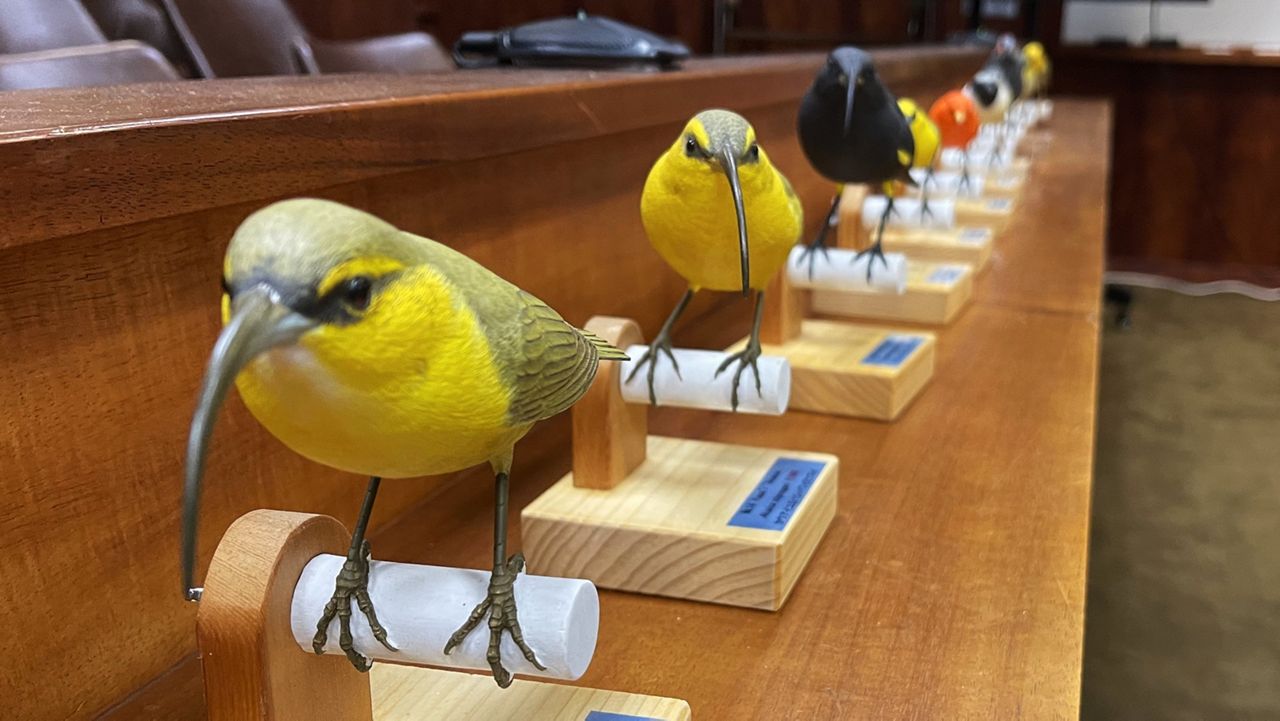HONOLULU — Gov. Josh Green launched a year-long celebration of Hawaii’s endangered birds by signing a proclamation on Friday.
This year is “Makahiki O Nā Manu Nahele: Year of the Forest Birds” that will include public events, volunteer opportunities and new educational classroom materials.
According to the Department of Land and Natural Resources’ Division of Forestry and Wildlife, there were at least 113 species of native birds in the Hawaiian Islands prior to humans arriving on the scene. They played a fundamental role in Hawaii’s ecology, such as pollination and dispersing seeds, as well as in native Hawaiian culture.

“We are all living in bird habitat,” said Green during the signing ceremony at the Hawaii State Capitol. “Native forest birds are a fundamental part of what makes Hawaii, Hawaii.”
Dawn Chang, chair of the Board of Land and Natural Resources, said the birds are “part of our connection to place, our moʻolelo, and part of who we are. Protecting Hawaiian forest birds is among our greatest kuleana.”
Fifty-eight of the 84 Hawaiian forest bird species recorded in the fossil record or by observation have gone extinct, according to a DLNR news release. Of the 26 species remaining, 24 have been designated at risk levels ranging from “vulnerable” to “critically endangered” by the International Union for the Conservation of Nature.
The ʻakikiki, ʻakekeʻe, kiwikiu and ʻākohekohe are four species of honeycreepers at risk of extinction in the next 10 years or less without considerable conservation efforts.

Habitat loss, increased predation by non-native species and avian malaria spread by invasive mosquitoes have caused the decline in honeycreeper populations in recent years.
Introduced to Hawaii in the early 1800s, mosquitoes began spreading avian diseases in the early 1900s, according to Birds, Not Mosquitoes. The spread of disease passed through mosquito bites was never an issue since temperature kept the birds and mosquitoes separated — birds live in the cool higher elevations, mosquitoes in warmer low elevations. But one of the effects of climate change is the warming of earth’s temperature. The result is mosquitoes encroaching into higher elevations.

In 2023, the Incompatible Insect Technique was implemented as a new tool to control the mosquito population carrying the avian malaria. Officials believe the combination of mosquito control and controlling predators with fencing will offer the best hope for the survival of Hawaii’s forest birds.
State and federal agencies, nonprofits organizations and other partners including Bishop Museum and Kamehameha Schools created a year-long “Makahiki O Nā Manu Nahele: Year of the Forest Birds” campaign available online to engage students and raise awareness of native forest birds, including a list of events on each island that will be regularly updated.
Sarah Yamanaka covers news and events for Spectrum News Hawaii. She can be reached at sarah.yamanaka@charter.com.



